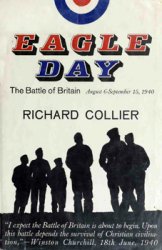Classical archaeology encompasses the study of ancient societies of the circum-Mediterranean together with areas (e. g., Europe, Middle East, North Africa) colonized by the Roman Empire and the region’s earlier thalassocracies (e. g., Etruscans, Phoenicians, Greeks). The time span covered by classical archaeology has been predominantly the ‘classical’ Greek and Roman civilizations (approximately eighth century BC to the fifth century AD). However, during the twentieth century, research has extended both to the prehistoric periods, especially the Bronze Age (c. second millennium BC), and to the late/post-Roman period of Late Antiquity (c. fourth to seventh centuries AD).
The density, diversity, and quantity of material remains of ancient Mediterranean societies are such that a number of specialized fields emerged early in the history of the discipline: art historical analysis of Greek and Roman art and architecture, philological and epigraphic analysis of Greek and Latin inscriptions, numismatics and the broader study of the imperial economic system, military history and the process of colonization, underwater archaeology of Bronze Age and classical period shipwrecks, and applications of archaeometry for physicochemical analyses of materials (e. g., coins, amphorae, and marble).
The 125 years of archaeological research at the Roman memorial monument and ancient city of Tro-paeum Traiani in SE Romania (see Figure 1) is an excellent example of the evolution of, and changes within, the profession of classical archaeology and illustrates the multidisciplinary nature of the field. Uncovered in the nineteenth century, and with no ancient records, the first task was to excavate and identify the disheveled construction and collect the dispersed inscriptions and associated artworks. Through epigraphic research on inscriptions, the location was identified as a major battlefield of Emperor Trajan’s first war with the local Dacians (101-2 AD) and was associated with the nearby fortified city settled by Roman veterans. Once 49 of the original 54 metopes (rectangular sculptural scenes) had been recovered, art historians debated for a century the order of the metopes, their enigmatic significance, and the identity of the sculptor(s). Meanwhile, military historians not only had a location for a major battle identified, but also corroborating illustrative data on Roman armor and weapons. Simultaneously, archaeologists, architects, and engineers labored to reconstruct the monument, which was rebuilt in the 1970s, over the Roman concrete core. For most of the twentieth century, meticulous excavations have revealed the complicated 500-year architectural history of the city (second to sixth centuries AD). Since 2002, a regional surveying and hydroarchaeology program was undertaken to identify rural satellite settlements and the extensive aqueduct system needed to support the city.




 World History
World History









